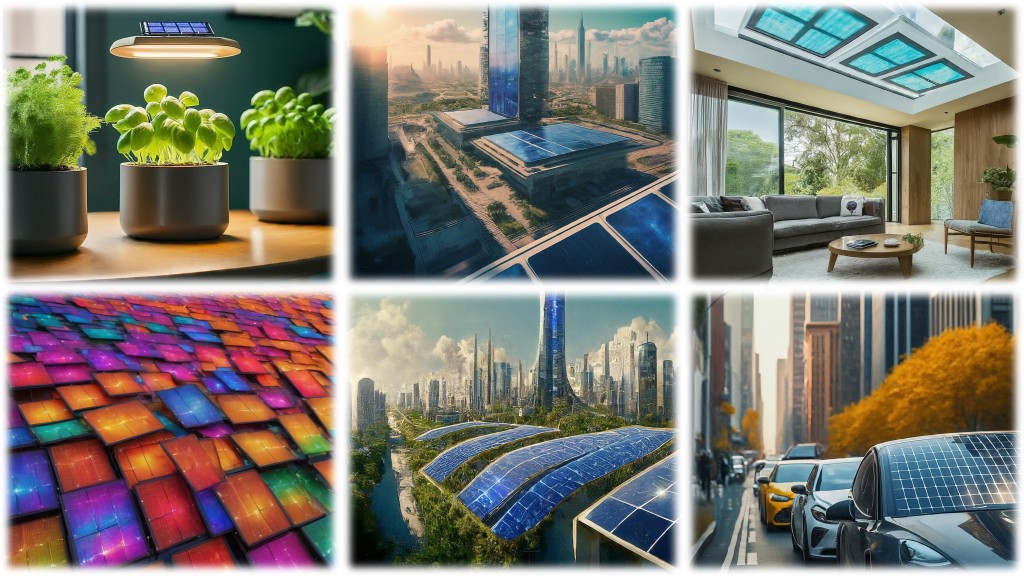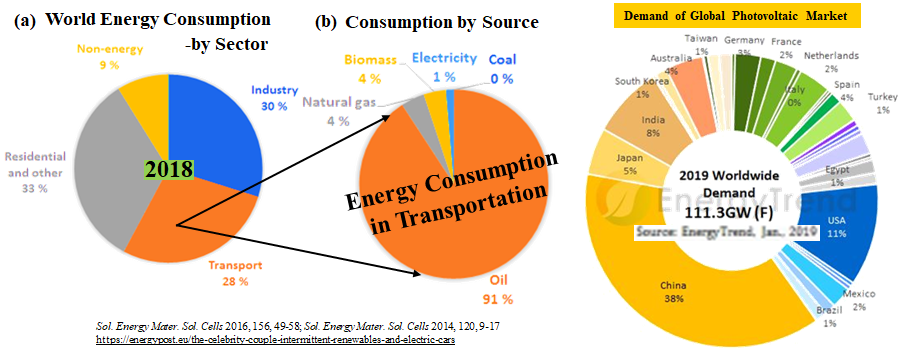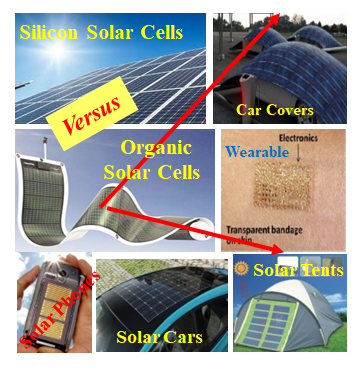
Rapid economic growth in developed and developing countries, substantial population increases, and rapid urbanization worldwide have contributed to a dramatic increase in global energy consumption. Particularly, the global transportation of products and people is a very crucial factor in determining the potential economic growth and in international energy demand. According to various surveys on world energy consumption in various sectors (Figure a), transportation accounts for 28% of final energy consumption. Although energy consumption in industrial and residential sector is higher, but their major source of consumption is electricity. While in case of transportation, fuel is the major source (Figure b). Currently, transportation system (light-duty vehicles, buses, trucks, trains) is totally dependent on fuel oil (gasoline, diesel, petrol) which is getting depleted by day and night. This not only leading to increase in prices of fuels, but also the CO2 emission is contributing to global warming at a greater pace.

Earth is blessed with enormous amount of solar radiation each day. According to reports, 0.3% of the earth’s surface is what is required to harvest the energy needed for all of humanity’s electrical and auto transportation needs, which is roughly the size of Arizona. Therefore, exploitation of solar energy in transportation is one of the best approaches to get rid to highly priced gasoline and minimize the CO2 emission. Therefore, the investment in solar panels pays off faster when the solar power is capable of replacing much more expensive gasoline. For example, as reported by others, electric vehicles (EV) typically travel 3-4 miles (or more) per kWh of electricity. If you drive 12,000 miles per year, you will need 3,000-4,000 kWh and, ~3kW solar panel system will be needed to generate that much power for the vehicle. Assuming the price for the PV setup is $7000 and lifetime is 10 years, you’ll save about $8000 in gas (assuming $3.54 per gallon, a 28 miles per gallon vehicle, and 12,0000 miles driven) ~ 50% reduction in fueling costs. This has led to a rapid demand in global photovoltaic market.

Among various kinds of solar cells, organic solar cells (OSCs) have great potential for large-scale manufacturing at very low cost, has low environmental impact (uses earth-abundant materials) and large mechanical flexibility which make them very suitable for use as light-weighted flexible devices for example in curvy solar vehicles. This third-generation solar cells, unlike traditional silicon solar cells, has great potential for smart energy applications with short energy payback times. Currently the comparable efficiency as like silicon with stretchable, flexible properties, make them suitable for applications beyond rooftop and solar-farm panels such as in curvy solar vehicles. For example, heavy and rigid silicon solar panels with PCE ̴ 12-15% and 10 years lifetime, cost us around $0.3-0.5/Wp. While the same efficiency based organic solar cells will not only be light weighted and flexible but can also be produced at much lower cost due to easier manufacturing and use of earth-abundant materials. However, we still need to bring out its full potential and robust nature as at the current level, these organic devices tend to lose its high performance when exposed to ambient atmosphere or frequent stretching/folding. For solving these issues several researchers like me have been working across the globe and yes, we are on verge of solving this roadblock.


Leave a comment